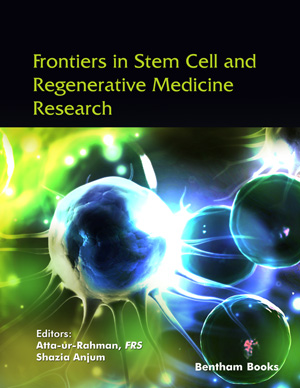
Abstract
With the development of society, the global population is showing a trend of aging. It is well known that age is one of the factors affecting wound healing. Aging compromises the normal physiological process of wound healing, such as the change of skin structure, the decrease of growth factors, the deceleration of cell proliferation, and the weakening of migration ability, hence delaying wound healing. At present, research in adult stem cell-related technology and its derived regenerative medicine provides a novel idea for the treatment of senile wounds. Studies have confirmed that CD271 (P75 neurotropism receptor/P75NTR)-positive cells (CD271+ cells) are a kind of stem cells with a stronger ability of proliferation, differentiation, migration and secretion than CD271 negative (CD271- cells). Meanwhile, the total amount and distribution of CD271 positive cells in different ages of skin are also different, which may be related to the delayed wound healing of aging skin. Therefore, this article reviews the relationship between CD271+ cells and senile wounds and discusses a new scheme for the treatment of senile wounds.
Graphical Abstract
[http://dx.doi.org/10.1016/j.canlet.2019.07.011] [PMID: 31325530]
[http://dx.doi.org/10.18632/oncotarget.2269] [PMID: 25149537]
[http://dx.doi.org/10.1038/nrm2241] [PMID: 17717515]
[http://dx.doi.org/10.1016/j.jdermsci.2011.01.012] [PMID: 21382697]
[http://dx.doi.org/10.1038/jid.2014.454] [PMID: 25330297]
[http://dx.doi.org/10.1111/1346-8138.13048] [PMID: 26300383]
[PMID: 11978565]
[http://dx.doi.org/10.1016/j.jdermsci.2007.05.015] [PMID: 17644316]
[http://dx.doi.org/10.1016/j.fsc.2011.04.003] [PMID: 21763983]
[http://dx.doi.org/10.1007/978-981-13-3681-2_10] [PMID: 30888656]
[http://dx.doi.org/10.1016/S0190-9622(96)80114-9] [PMID: 8642084]
[http://dx.doi.org/10.1111/j.1365-2133.1987.tb04921.x] [PMID: 3676091]
[http://dx.doi.org/10.1111/1523-1747.ep12532761] [PMID: 448177]
[http://dx.doi.org/10.1111/j.1524-4725.1990.tb01554.x] [PMID: 2229632]
[http://dx.doi.org/10.1159/000381534] [PMID: 25997892]
[http://dx.doi.org/10.1007/s00441-017-2723-8] [PMID: 29150821]
[http://dx.doi.org/10.1016/0923-1811(93)90764-G] [PMID: 8241073]
[http://dx.doi.org/10.1111/j.1365-2133.1994.tb08588.x] [PMID: 7857838]
[http://dx.doi.org/10.1111/j.1468-2494.2007.00415.x] [PMID: 18377617]
[http://dx.doi.org/10.1111/1523-1747.ep12532792] [PMID: 448169]
[http://dx.doi.org/10.1089/wound.2018.0912]
[PMID: 27224842]
[http://dx.doi.org/10.1016/S0012-3692(15)31287-3] [PMID: 15486373]
[http://dx.doi.org/10.1097/ALN.0000000000000036] [PMID: 24195972]
[http://dx.doi.org/10.1007/s11357-014-9683-7] [PMID: 25012275]
[http://dx.doi.org/10.4049/jimmunol.1201213]
[http://dx.doi.org/10.1159/000342344] [PMID: 23108154]
[http://dx.doi.org/10.3389/fcell.2020.00773] [PMID: 32850866]
[http://dx.doi.org/10.2337/diabetes.50.3.667] [PMID: 11246889]
[http://dx.doi.org/10.1016/j.jdermsci.2013.07.008] [PMID: 23958517]
[http://dx.doi.org/10.1111/wrr.12170] [PMID: 24844339]
[http://dx.doi.org/10.1001/archotol.1996.01890140057011] [PMID: 8630211]
[PMID: 22928164]
[http://dx.doi.org/10.18632/aging.101240]
[http://dx.doi.org/10.1177/002215540305100902] [PMID: 12923237]
[http://dx.doi.org/10.1111/wrr.12290] [PMID: 25817246]
[http://dx.doi.org/10.1016/j.jss.2006.08.006] [PMID: 17070552]
[http://dx.doi.org/10.3390/cells9020306] [PMID: 32012802]
[http://dx.doi.org/10.1002/(SICI)1097-4644(20000401)77:1<116:AID-JCB12>3.0.CO;2-7] [PMID: 10679822]
[http://dx.doi.org/10.1097/PRS.0b013e31816a9f6f] [PMID: 18453989]
[http://dx.doi.org/10.1523/JNEUROSCI.0591-15.2015] [PMID: 26311773]
[http://dx.doi.org/10.1038/s41598-017-07348-9] [PMID: 28765645]
[http://dx.doi.org/10.1038/celldisc.2015.30]
[http://dx.doi.org/10.1016/j.biopha.2015.10.010] [PMID: 26653545]
[http://dx.doi.org/10.1016/j.pathol.2017.12.340] [PMID: 29678478]
[http://dx.doi.org/10.1038/srep30707]
[http://dx.doi.org/10.1634/stemcells.2006-0494] [PMID: 17110619]
[http://dx.doi.org/10.1038/sj.onc.1206525] [PMID: 12821936]
[http://dx.doi.org/10.1177/147323000903700531] [PMID: 19930861]
[http://dx.doi.org/10.2177/jsci.40.1] [PMID: 28539548]
[http://dx.doi.org/10.1371/journal.pone.0053594] [PMID: 23308259]
[http://dx.doi.org/10.1016/j.exger.2008.09.001] [PMID: 18809487]
[http://dx.doi.org/10.2340/00015555-2624] [PMID: 28127619]
[http://dx.doi.org/10.1007/s00441-019-03125-4] [PMID: 31768712]
[http://dx.doi.org/10.1016/j.jdermsci.2010.02.003] [PMID: 20194005]
[http://dx.doi.org/10.1111/exd.14601] [PMID: 35524485]
[http://dx.doi.org/10.1016/j.jdermsci.2013.04.006] [PMID: 23642664]
[http://dx.doi.org/10.1073/pnas.83.12.4167] [PMID: 2424019]
[http://dx.doi.org/10.1016/S0002-9440(10)63754-6] [PMID: 15161630]
[http://dx.doi.org/10.1038/mt.2012.234] [PMID: 23164936]
[http://dx.doi.org/10.1016/j.cell.2013.05.039]
[http://dx.doi.org/10.1016/S0002-9440(10)63337-8] [PMID: 15331399]
[http://dx.doi.org/10.1172/JCI11914] [PMID: 11160126]
[http://dx.doi.org/10.1016/j.semcdb.2012.10.001] [PMID: 23085626]
[http://dx.doi.org/10.1016/j.stem.2011.04.005] [PMID: 21549317]
[http://dx.doi.org/10.1016/0092-8674(90)90696-C] [PMID: 2364430]
[http://dx.doi.org/10.1016/j.cell.2006.06.048]
[http://dx.doi.org/10.1016/j.stem.2009.09.014]
[http://dx.doi.org/10.1242/dev.130633] [PMID: 26732838]










